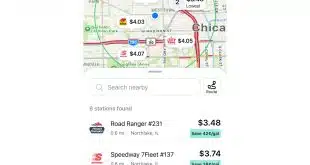Ever since Apple Pay launched in the fall of 2014, observers have questioned why the mobile-payment service hasn’t caught on with consumers. One possibility is that the service’s contactless capability remains foreign to most consumers. That could change next month, when Apple Inc. is expected to widen the range of apps that can access its near-field communication chip.
The move, experts say, is likely to give Apple Pay a badly needed boost as iPhone users become familiar with tapping and waving their device for functions that may have nothing to do with payments. Apple did not respond to a request for comment from Digital Transactions News.

If Apple follows through on these expectations, the impact on Apple Pay could be significant, observers say, as users get used to the action of waving or tapping to perform a task. Experts say unfamiliarity with NFC technology may account for at least some of Apple Pay’s sluggish adoption. While the number of Apple Pay users worldwide more than doubled from 2016 to 2017, going from 62 million to 127 million, that number still represented just 16% of all eligible iPhone owners, according to research by Minneapolis-based Loup Ventures released in February .
“People are in the habit of using cards,” notes Aaron McPherson, vice president for research operations at Mercator Advisory Group, Maynard, Mass. With the move to add more NFC functions, he says, Apple “will get people into the habit of using [NFC]. It makes sense. It’s long overdue.” Already, Apple has extended NFC in its phones to location-based applications, according to the Quartz account.
Indeed, the key to increasing mobile-payment usage is customer training, say some observers. “If a consumer can use their wallet in more ways than simply for payments, then the habit of using their smart phone for non-communicative purposes is reinforced. And, as the habituation increases, the perceived friction of using the smart phone in different ways goes down,” says Thad Peterson, who follows mobile payments as a senior analyst at Aite Group LLC, Boston, in an email message. “So, any increase in usage of the smart phone for NFC transactions should have a positive effect on use of the smart phone for payments.”
Still, other factors could account for sluggish Apple Pay usage, including an absence of benefits for users, such as discounts or other rewards. “The real problem with Apple Pay is there’s no incentive to use it,” says McPherson. Also, until recently most stores did not have NFC capability installed at the point of sale. The rollout of EMV since 2015 has largely remedied that problem.
And it remains unclear just how far Apple will extend availability of its NFC chip, McPherson adds. Will the move include third-party app developers, for example, as has been the case with the iPhone’s fingerprint sensor?
“If they don’t open it up the way they did Touch ID, I’d still see it as a step forward, but I’d be less enthusiastic,” McPherson adds.




